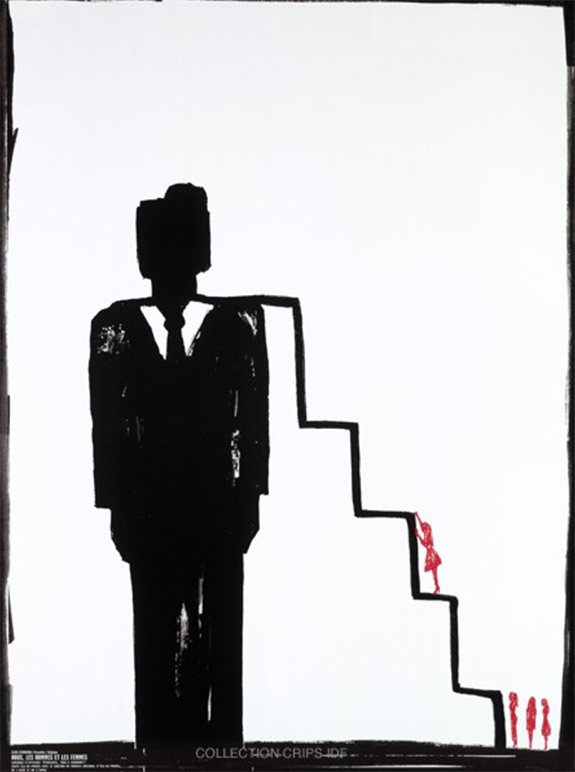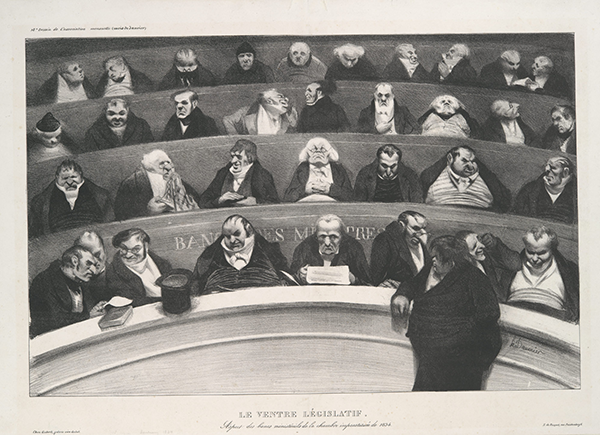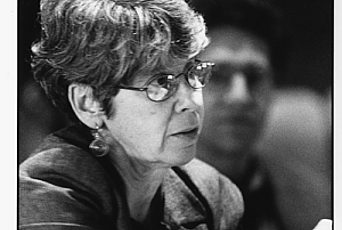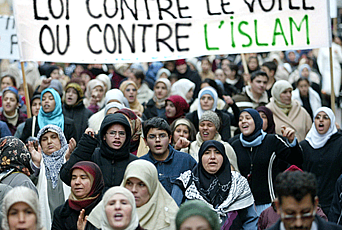Women in French Politics: Rank and File More Often Than Leaders

In 2007, when Ségolène Royal announced her candidacy to the Socialist primary for the presidential election, Laurent Fabius, former prime minister under President François Mitterrand, ironically commented: “But who will take care of the kids?” an obvious reference to the fact that her partner, François Hollande, also a politician, was above such mundane domestic tasks. While Royal won that primary, she eventually lost the second presidential round to Nicolas Sarkozy. Ten years later, for only the second time in French history, a woman, Marine Le Pen, leader of the far-right party Front National, is running for president with a high probability of participating in the decisive second round, according to all opinion polls. In today’s France, a woman running for the highest political office does not seem to make news any more. It is indeed the case that, after centuries of political ostracism, women have recently become more present in French political life: from less than 20 percent in state and local governments until 2000, their proportion rose to 41 percent in 2016.
But the presence of a few prominent female figures and seemingly favorable statistics do not tell the whole story. Although 40 percent of municipal counselors are women, only 16 percent of them are mayors; and if women do represent 48 and 50 percent of departmental and regional counselors, respectively, only 10 percent are president of a department and not more than 17 percent preside over a region. No woman has ever been the speaker of the National Assembly or the Senate. The only female prime minister that a French government ever had, Edith Cresson, survived eleven months in office—the shortest duration ever—and from day one faced strong sexist hostility. On the very day of her nomination, a conservative representative declared, “It is the Pompadour entering Matignon,” comparing her to the famous mistress and confidante of King Louis XIV.
Thus, despite the law on parité, first passed in 2000 and reinforced five times since then, which requires that as many women as men be nominated in local and national elections (except for local elections in towns with fewer than one thousand inhabitants), women remain marginalized in the actual exercise of political power. They continue to confront offensive stereotypes and contemptuous attitudes. Women legally take part in the political game, but they are still considered illegitimate by their male colleagues, whose power position they challenge. This illegitimacy of women in politics has deep historical roots.

The long tradition of excluding women from exercising political power can be traced to the Ancien Régime, when the second Salic Law, passed in the fifteenth century, ruled that no woman could inherit the French crown. During the 1789 Revolution, the legislators favored women’s civil emancipation while establishing their political incapacity as an absolute principle, despite their active participation in the revolutionary process. Although acknowledging many important principles (strict separation between legislative, judicial, and executive powers; recognition of freedom of press, religion, and association; abolition of slavery; and adoption of universal manhood suffrage), the 1848 Constitution, which founded the second Republic, still left women disenfranchised. And for yet another century, women were ruled out of the public and political sphere. Whereas in Britain the Suffragist Movement, after years of repression, obtained political rights for women in 1918, and while many European countries followed the same path before World War II, in France, the feminist leaders and their allies could not overcome the strong opposition to women’s political rights.
In France, World War II heralded a turning point in the history of women’s political rights. Women had played an active role during the war, both economically while men were on the battle front, and politically in the Resistance against the Nazi occupation. Thus, in April 1944, an ordinance of the national government, enacted by the Provisional French Government, included an amendment proposed by a Communist congressman, a member of the Resistance, stating that “women are voters and eligible in the same conditions as men.” In April 1945, women participated for the first time in municipal elections. The same year, out of 586 representatives, thirty-three women, most of them having been résistantes, and some having endured captivity and even torture, entered the National Assembly for the first time.
This major legal reform, however, went unheeded for fifty years, and no more than a handful of women held a political office during that period. Becoming a subject of legal political rights did not suffice to erase the “cultural underpinnings of misogyny in politics” in Mary Beard’s words. A second decisive legal shift was needed to transform that formal right into more effective political equality. In 1992, Françoise Gaspard (sociologist and Socialist politician), Claude Servan-Schreiber, and Anne le Gall (both journalists and feminists), published the book Take Power, Female Citizens! Liberty, Equality, Parité, transforming the French motto Liberty, Equality, Fraternity. The demand for parité opened a decade of heated debates. Declarations and manifestos abounded in newspapers: in 1993, 577 men and women (symbolically the number of deputies in the Assembly) published in the newspaper Le Monde a “Manifesto for an equal democracy” in which they declared that “Parité is a condition for democracy, as are the separation of powers and universal suffrage.” In 1996, ten former female ministers, from across the political spectrum, published another manifesto demanding that the concept of political parité be enshrined in the French Constitution: “From condescending indifference and contempt to open hostility, we have been able to measure the gap between public principles and reality in the behavior of the political class. To reach real equality between women and men at every level and in every sector of French society, politics has to set a good example. And for that purpose, the time of constraint has come.”
One year later, the newly appointed Socialist Prime Minister Lionel Jospin announced in his inaugural declaration a constitutional modification, unanimously adopted by the Parliament in July 1999: “The law favors equal access for women and men to elected mandates and offices. Political parties shall contribute to the application of this principle under conditions determined by the law.” And, in 2000, the law on parité enforced this principle by determining that public subsidies to political parties would be adjusted according to their observance of parité in nominating candidates for elections.
In her analysis of the movement for parité in France, Joan W. Scott underlined that the designers of the law were fully aware that the law itself, though opening political space to women and acknowledging inequality between women and men, would not suffice to change mentalities, at least in the short term. The law certainly could limit the control that men exercised in politics, but not terminate it. From the perspective of 2017, it is clear that the law did not deliver on all its promises. In my research interviewing women on their experience of parité since the law in 2000, I found this to be the case. In particular, three major structural factors contribute to women’s political underrepresentation.

First, the electoral system itself, established in 1958 by the Fifth Republic, has long disadvantaged women, mainly in two ways. On the one hand, it favors safely entrenched incumbents who consider their constituency as their stronghold, and who remain candidates in every election. In the current legislature, more than half of the representatives and senators have been in office for at least 2 consecutive mandates, that is to say ten years (in the Assembly) to twelve years (in the Senate). Low turnover, a direct result of incumbency, provides fewer opportunities for newcomers, notably women, to increase their presence. On the other hand, the system allows for the possibility of holding multiple offices simultaneously, leading to the concentration of political positions in the hands of very few. While 80 percent of representatives and senators hold at least one additional political office in France, only 24 percent do so in Germany, 20 percent in Spain, 13 percent in Italy, 6 percent in the Netherlands, and 3 percent in Britain. This French exception may nevertheless soon disappear. A law passed in 2012, which will be in effect by June 2017, forbids, from then on, the holding of a national and a local executive office by the same person at the same time.
Second, political parties, ruled almost exclusively by men, have long been key factors for women’s marginalization in politics, the left-wing parties being ideologically more open to the question of equality. The French Communist Party was for a long time the only one nominating a certain quota of women in each election. The Socialist Party waited until 1974 to determine a quota in its executive body and until 1996 to apply this quota system to House elections, which happened only under great pressure from feminist party activists. Its statutes now respect strict parité in every election. By contrast, no conservative party adopted any rule favoring women’s participation before the 2000 law, and the new statutes adopted by the Republicans in 2015 make a general statement of the principle of parité without any concrete means to achieve it.
As a result of these contrasting policies, Socialist and Communist parties have nominated 48 percent of women as candidates for the upcoming legislative election in June 2017, many of whom are already in office, whereas the Republicans did so for only 31 percent, and mostly in districts where they are more likely to lose. In doing so, they choose financial sanctions over parité and favor male incumbents.
Third, the institutionalization of parité in politics, first seen as a great democratic advance by the feminist movement, has in fact contributed to a certain demobilization on this issue: since there is a law, it should work! So, it is only recently, when evidence showed that parité has not necessarily led to men’s sharing effective power with women, that this question has been recognized and included once again on the feminist political agenda.
The experience of parité has also revealed the limits of the law for transforming the social and political framework in which French politics takes place. The law has had no major impact on the rules that govern political space, which favor men’s participation. Gendered language permeates the political landscape—politics and elections are most often described in terms of analogies and metaphors drawn from the traditionally masculine domains of war and sports; female politicians take the floor less often than men and are more likely to be interrupted while speaking; machismo and sexism are still frequent attitudes expressed without shame.
The law has had no major impact either on gendered stereotypes. When they do hold office, women are more likely to be confined to sectors considered feminine, such as family, health, child, or elderly care, and education, while finance, budget, and security—seen as more strategic domains—remain in men’s hands. Political decisions even reinforce stereotypes. Under the presidency of François Hollande, a Ministry for Women’s Rights was first created in 2012; it has since been dissolved, and incorporated into the Ministry of Family, Childhood, and Women’s Rights, once again relegating women to the domestic sphere.
Finally, the law has had no major impact on social roles: women and men still don’t equally share domestic work and care for children and family. On average, women spend ninety minutes more than men in daily domestic and parental tasks, even when both have a professional full-time occupation. Becoming a politician under these conditions remains more challenging for women than for men. Thus, for fifty-five years, from the recognition of their right to vote in 1945 to the enactment of the law on parité in 2000, women have largely stood at the margins of political office in France. Indeed, despite the positive public consensus and the favorable legal framework, the achievement of parité largely remains a matter of wishful thinking, and every legal interstice is found to get around the law. The presence of women in political office has certainly increased between 2000 and 2017, but they are still excluded from high-power positions and confined to so-called feminine domains. Political life in France continues to be deeply and unequally gendered.


